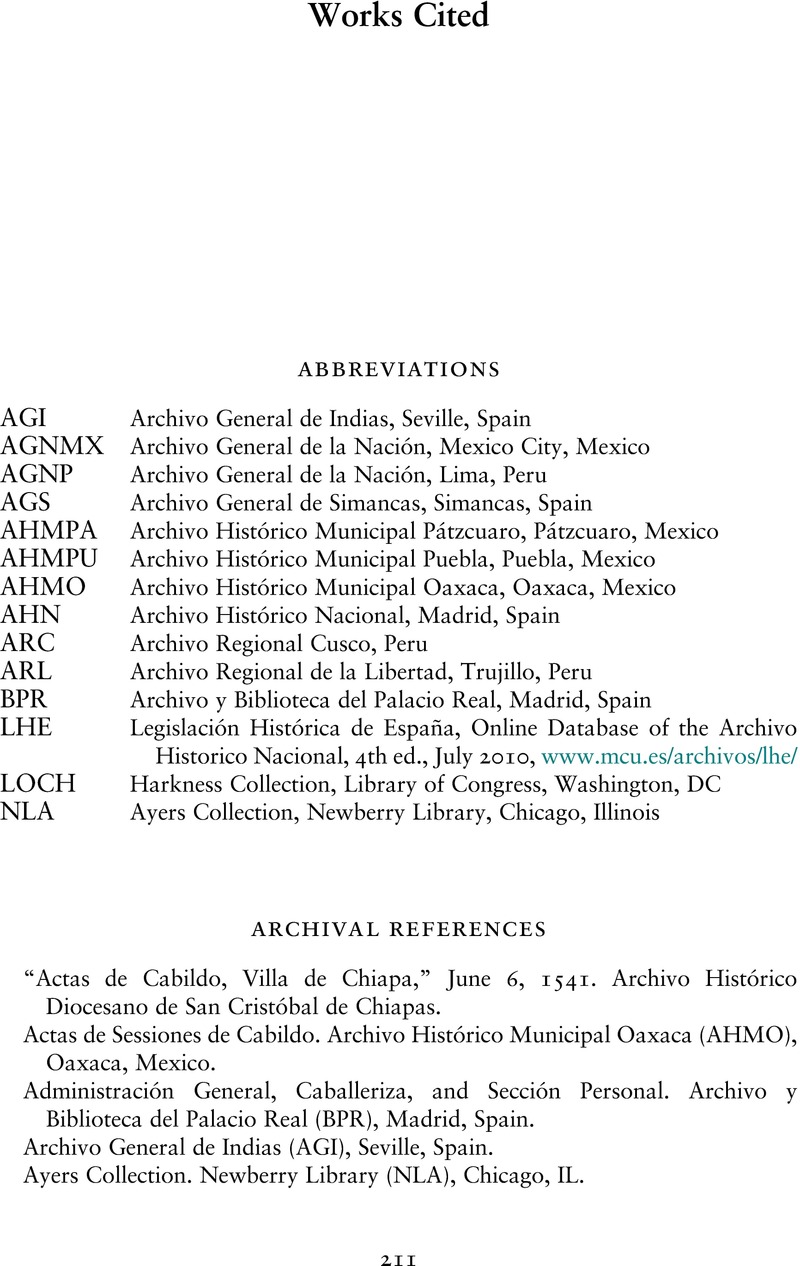Book contents
- Feral Empire
- Feral Empire
- Copyright page
- Dedication
- Contents
- Illustrations
- Acknowledgments
- Introduction
- 1 The Equine Imprint in Iberian History, Tenth to Fifteenth Centuries
- 2 A Politics of Horses
- 3 The Paradox of Abundance and Illusion of Control
- 4 Indigenous Equestrianism
- 5 Ferality and Breed in “New World” Horses
- 6 Defining Casta and Raza
- Conclusion
- Works Cited
- Index
- References
Works Cited
Published online by Cambridge University Press: 30 May 2024
- Feral Empire
- Feral Empire
- Copyright page
- Dedication
- Contents
- Illustrations
- Acknowledgments
- Introduction
- 1 The Equine Imprint in Iberian History, Tenth to Fifteenth Centuries
- 2 A Politics of Horses
- 3 The Paradox of Abundance and Illusion of Control
- 4 Indigenous Equestrianism
- 5 Ferality and Breed in “New World” Horses
- 6 Defining Casta and Raza
- Conclusion
- Works Cited
- Index
- References
Summary

- Type
- Chapter
- Information
- Feral EmpireHorse and Human in the Early Modern Iberian World, pp. 211 - 232Publisher: Cambridge University PressPrint publication year: 2024

